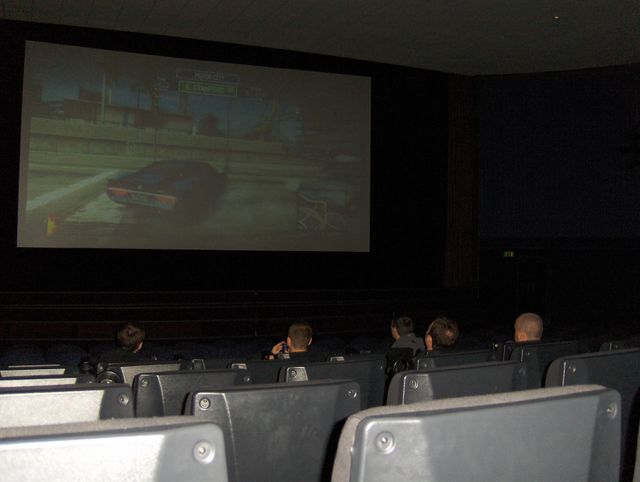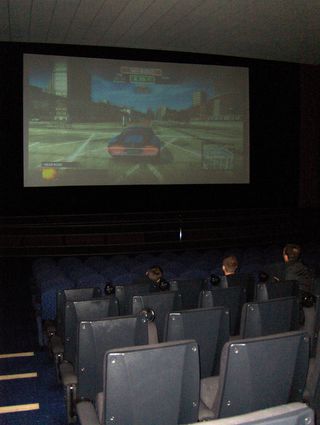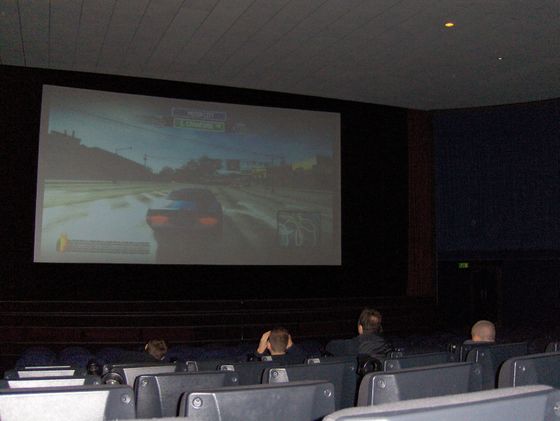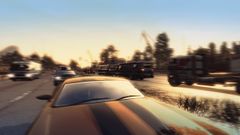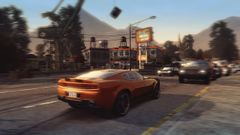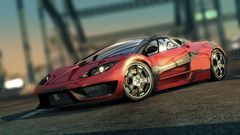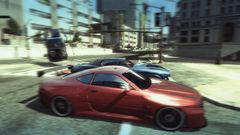Prerelease:Burnout Paradise (Xbox 360, PlayStation 3, Windows)
This page details pre-release information and/or media for Burnout Paradise (Xbox 360, PlayStation 3, Windows).
| To do: Literally everything.
|
Contents
Development Timeline
- Prior to 2006
- The initial environment slices and whitebox models of what would become Paradise City are created and prototyped.
- 2006
- August 29th: Via a press release, Paradise is announced under its initial name of Burnout 5 and given a tentative release date of "sometime in 2007".
- 2007
- April 28th: The game is given its final name and a new release date of Q4 2007. New screens and a trailer are released.
- July 6th: A pre-E3 build is shown off during an interview.
- July 17th: A playable pre-alpha demo is compiled and presented at E3 2007.
- c. September 21st: A near-final build is presented at a Tokyo Game Show 2007 pre-show event.
- October 31st: Work is completed on Paradise and the game goes gold.
- December 13th: A demo of the game is made available on PlayStation Network and Xbox Live Marketplace.
- 2008
- January 22nd: Paradise is released on PlayStation 3 and Xbox 360.
Early Gameplay Features (c. late 2006)
| To do: Convert the linked PDF's pages to images for upload. |
An interview with Criterion Games going into detail on several gameplay features and mechanics present in Paradise's initial stage of development that would later go on to be scrapped at unknown points in time.
Driving Offenses
Driving offenses and moving violations, a progression system completely absent from Paradise's final version, saw the player completing various stunts and objectives across the city.
- Driving offenses were seemingly tied to the player's driver's license progression; completing enough offenses would likely reward the player with a license upgrade or something similar to it.
- Each car had a list of ten specific offenses, known as "moving violations", associated with it. It is currently unknown what the player would have been rewarded with upon completing a given car's violation list.
Offline Rivalries
As opposed to the final game's Shutdown system, which periodically spawned AI drivers in Freeburn mode after an arbitrary number of event wins and instructed the player to take them down in order to claim their car, offline rivalries with roaming rivals was originally to be the player's primary method of unlocking new vehicles. Repeatedly taking down a rival would cause them to initially increase their aggression toward the player in tandem, before eventually progressing to becoming scared of the player, and fleeing upon noticing them. The player would then have to chase the rival down and "catch" them, likely via a Burnout 2-style Pursuit event, to claim the car and settle the rivalry.
- A slightly altered version of this system is present in Paradise's February 2007 prototype under the name of "Takedowns to Pursuit" and requires the player to repeatedly take down a rival until a target number of takedowns has been reached - after doing so, the player must track the rival down in Freeburn mode and attack them to begin the aforementioned Pursuit event.
Crash Mode
Crash, a popular gamemode absent from the last Burnout title, was set to return in full before being replaced with Showtime mode at an unknown point in development.
- Players would initiate Crash events by entering one of 50 junctions, which had been renamed to "blackspots" after the real-life term for dangerous and accident-prone locations.
- An alternate, more "freeform" version of the mode is also elaborated on that bears several similarities to Showtime, such as multipliers and other modifiers being vehicle-based, the lack of a timer, and being able to trigger a crash event at any time and at any point in the map via the "press of a button".
April 2007
Presentation Build
Shots of a PlayStation 3 build dated April 23rd, 2007 and presented to OPM UK's Tim Clark within the same month.
- Lots of HUD elements from Paradise's February 2007 prototype are still present here, along with a few updated elements that are identical to retail (such as road signs and Road Rule font).
- An early skybox, referred to as "aqua" internally, is seen for the first time here.
Reveal Trailer
July 2007
July 2nd Build
- Vehicles appeared to still be using two-dimensional wheel rim textures, akin to the Burnout 5 prototypes.
- Certain vehicles have prominent design differences:
- The Carson GT Concept had a single bar-shaped taillight.
- The Nakamura Ikusa GT was using an earlier design also featured in the February 2007 prototype.
- The Carson Annihilator was originally known as the "Detonator" before being renamed.
- Several large traffic vehicles that are absent from the final game, such as tow trucks and semis, are present here.
E3 Pre-Alpha
Paradise was first unveiled to the public in playable form at E3 on July 17th, 2007. The game resembles its final counterpart a bit more at this point, but plenty of differences and scrapped features remain (some of them dating back to the February 22, 2007 build).
General Differences
- Supercharge Boost, a boost type featured in several earlier versions that is referred to as Overdrive Boost by text strings present in final versions of Paradise, had not yet been removed by the time of this build.
- A revision of the HUD/UI unique to this build can be seen. It has a lot in common with later versions, but also takes heavy influence from the design of the February 2007 prototype.
- Cars had a much higher load transfer rate, shifting their weight much more from steering and collisions.
- Car deformation was far more severe, and crash physics were more dynamic - cars retained more of their momentum during crashes, and tended to tumble and skid much more as a result.
- Combat physics were rather different; instead of instantly veering off to the side after getting shunted or slammed, cars reacted more realistically to attacks.
- Super Jump cameras were slightly different, lacking the "camera-snap" effects of the final game.
- Smashing a billboard was still referred to as simply doing a "Stunt".
- There were 108 smashable billboards, 55 Super Jumps and 351 Smash Gates in the game at this point; the final version increased and decreased these amounts to 120, 50, and 400 respectively.
- In a developer interview from the same time as this pre-alpha's E3 showing, Matt Webster mentions attacking a roaming racer during Freeburn mode as the method for starting Road Rage events; this more than likely means that the roaming racers system featured in Paradise's February 2007 prototype was still intact by the time of this build. The aforementioned February build also features the exact same method of attacking roaming racers to start Road Rage.
Pre-E3 Interview Build
Gameplay of a build slightly predating the E3 pre-alpha was uploaded to IGN.com on July 6th, 2007. Aside from the traffic checking strength of the player car being significantly stronger than normal (as well as Burnout Revenge's Traffic Attack appearing as a playable gamemode, which may be related to the former) the footage shown is largely identical to the E3 build.
- Something of note is that event trigger stoplights for Road Rage appear several times throughout the video; this implies that Road Rage could be started either via spinning your car's wheels at a stoplight or attacking a roaming racer as mentioned above.
September 2007
IGN/GameSpot Build
It's presumed, but not confirmed, that the build shown here is the same one presented offsite at an EA pre-show party, a few nights before Tokyo Game Show that same month. The IGN videos are all dated September 7th, and the GameSpot videos are dated September 11th.
- The HUD/UI has been completely overhauled and is now identical to its final version, with the exception of a few minor elements.
- Crash physics have been altered since the E3 pre-alpha.
- Crash sound effects are much louder.
- Overdrive Boost has been removed in favor of the final game's separate Speed and Stunt boost types.
- At this point, Speed boost could be used whenever the player chose, rather than only after the bar was filled up.
- The amount of Super Jumps has been decreased to 53.
April 2008
Plane DLC
A footage of debug build showing unreleased of Plane DLC found in Crash FM Podcast 29 Outtake video
